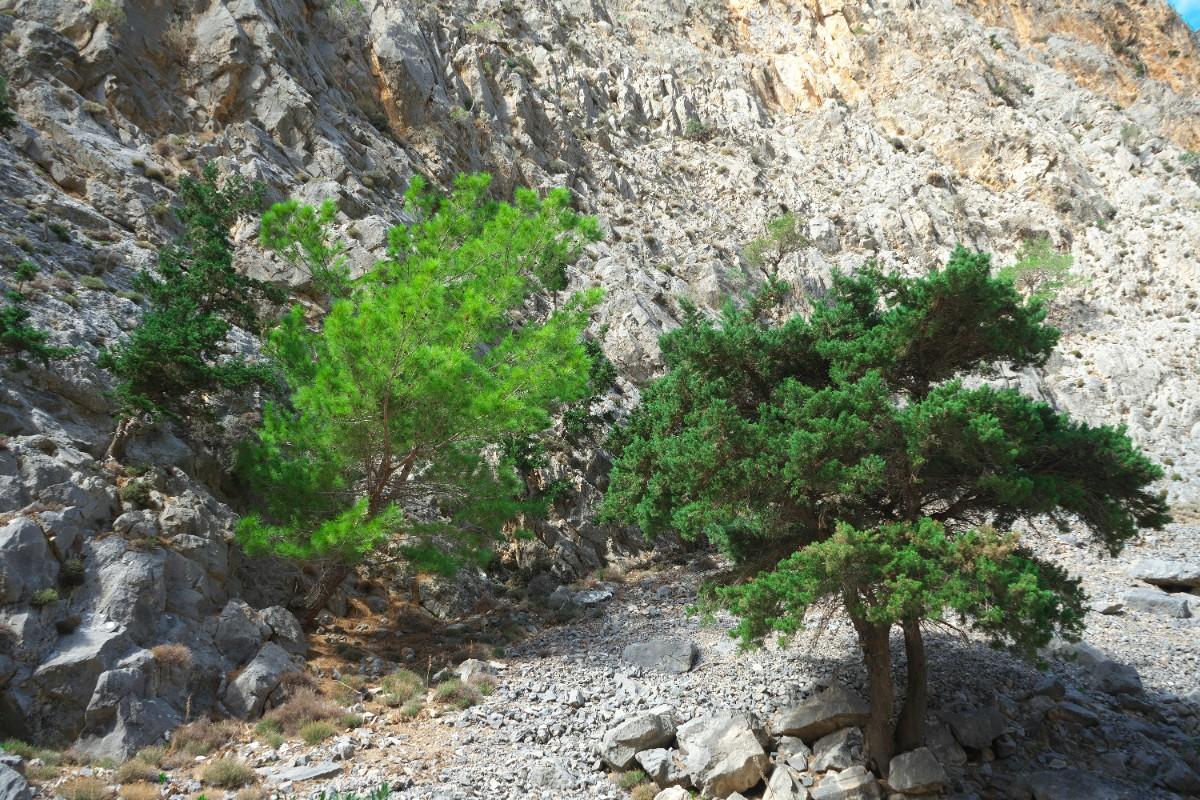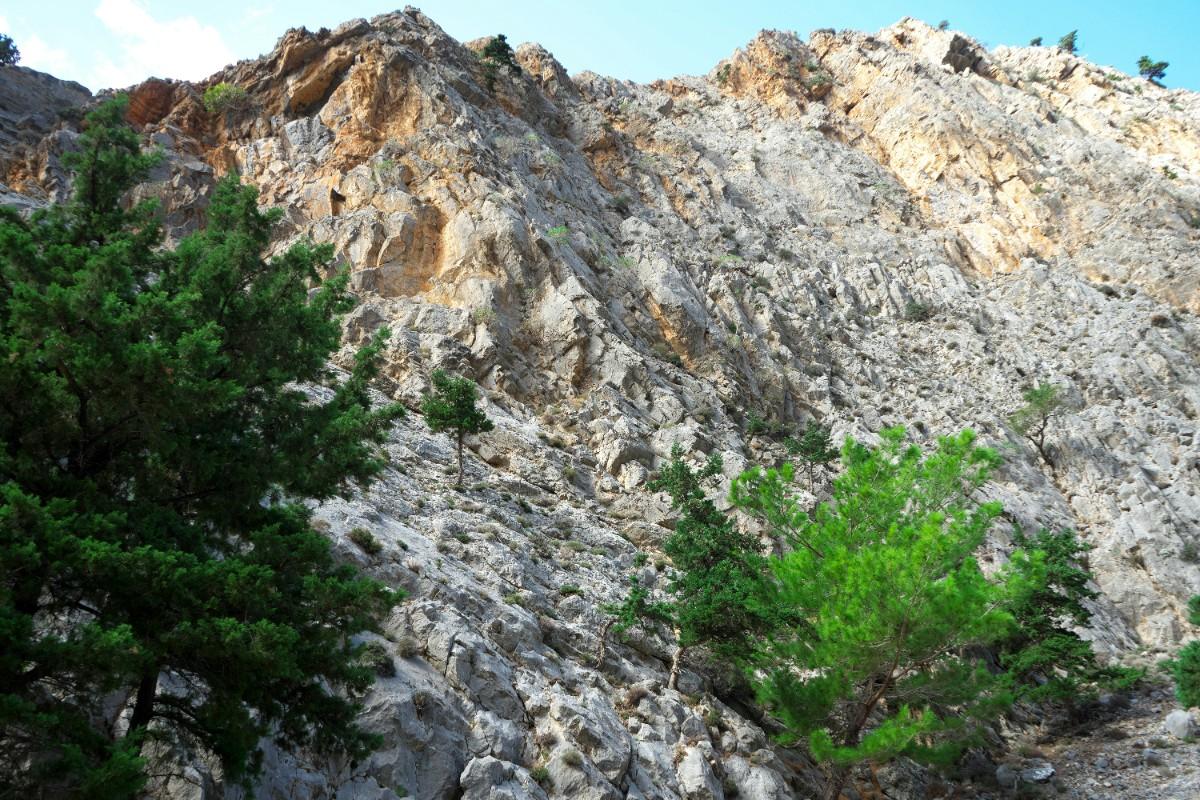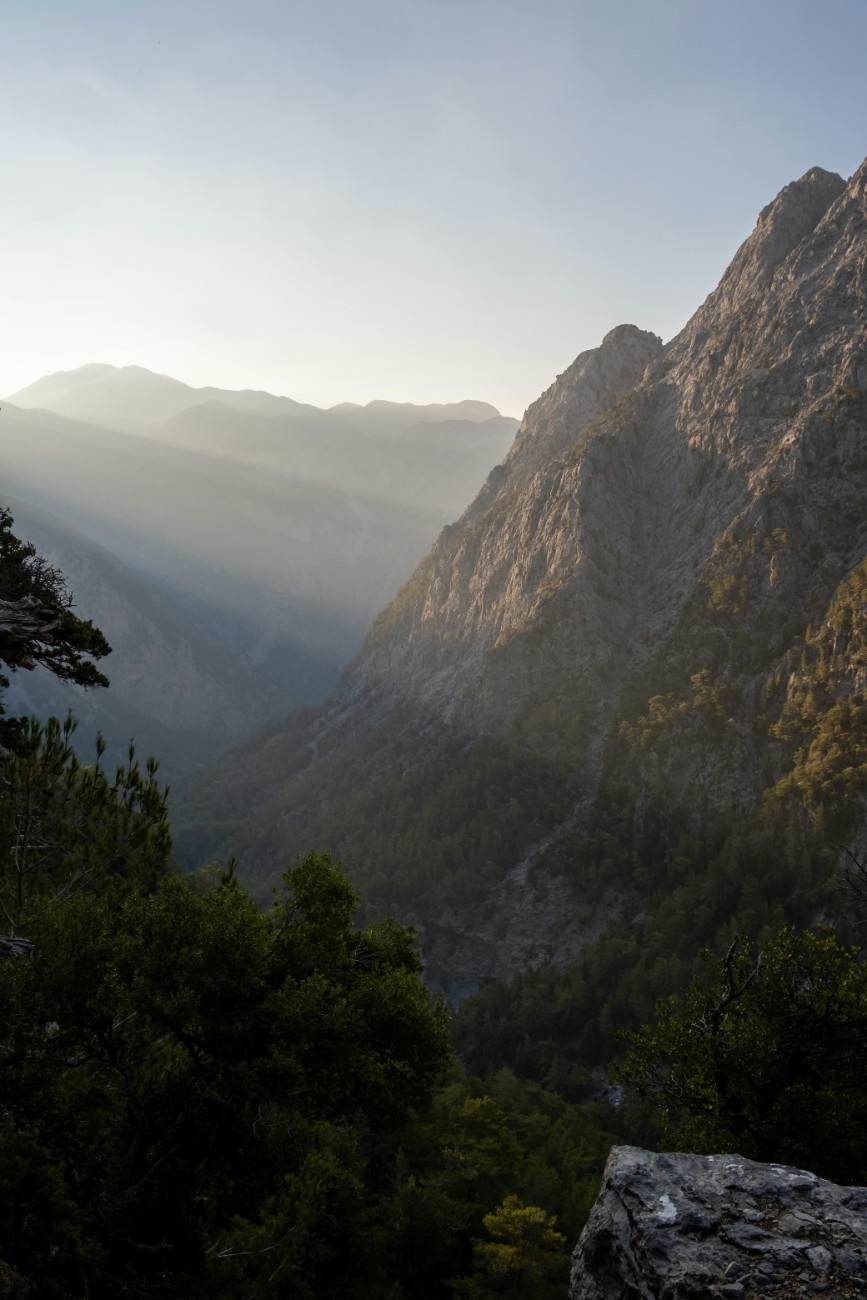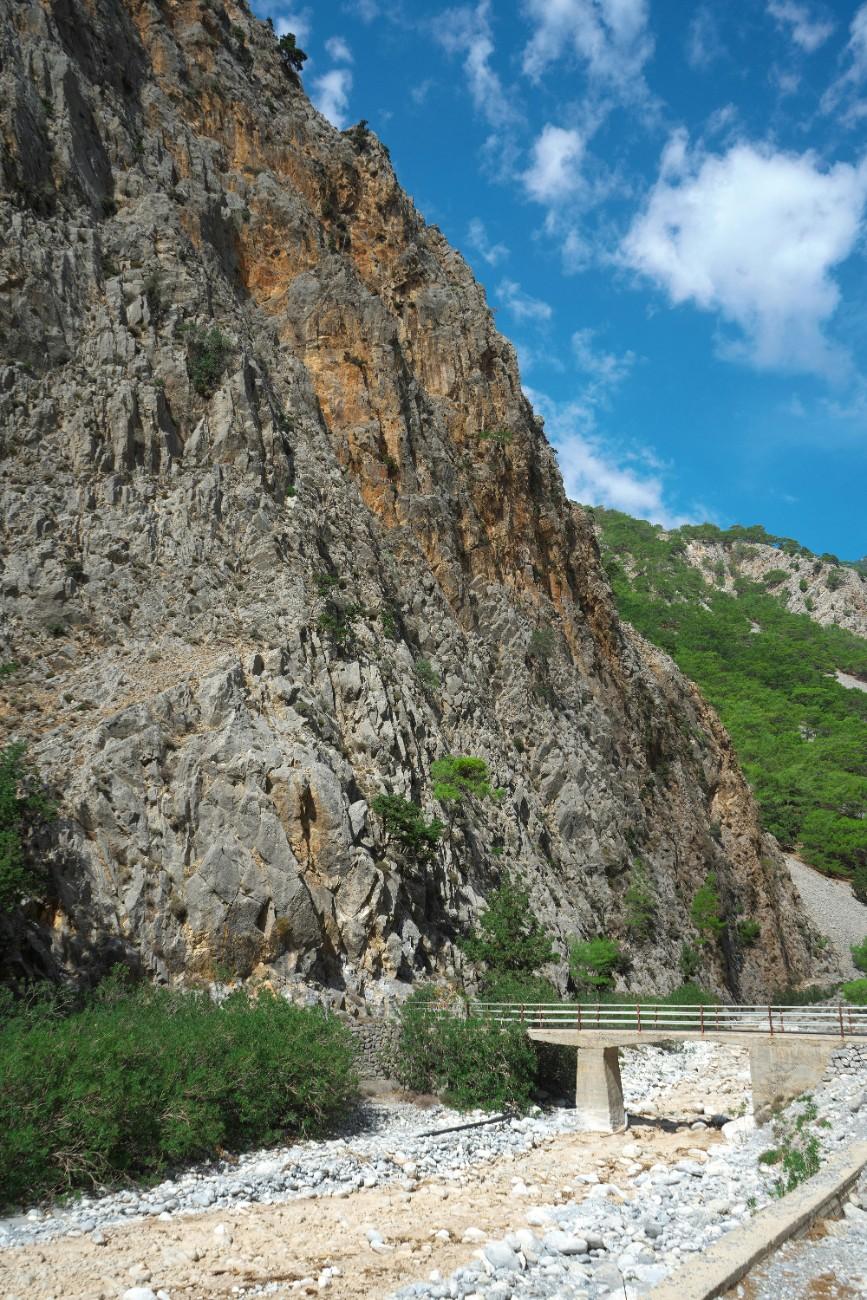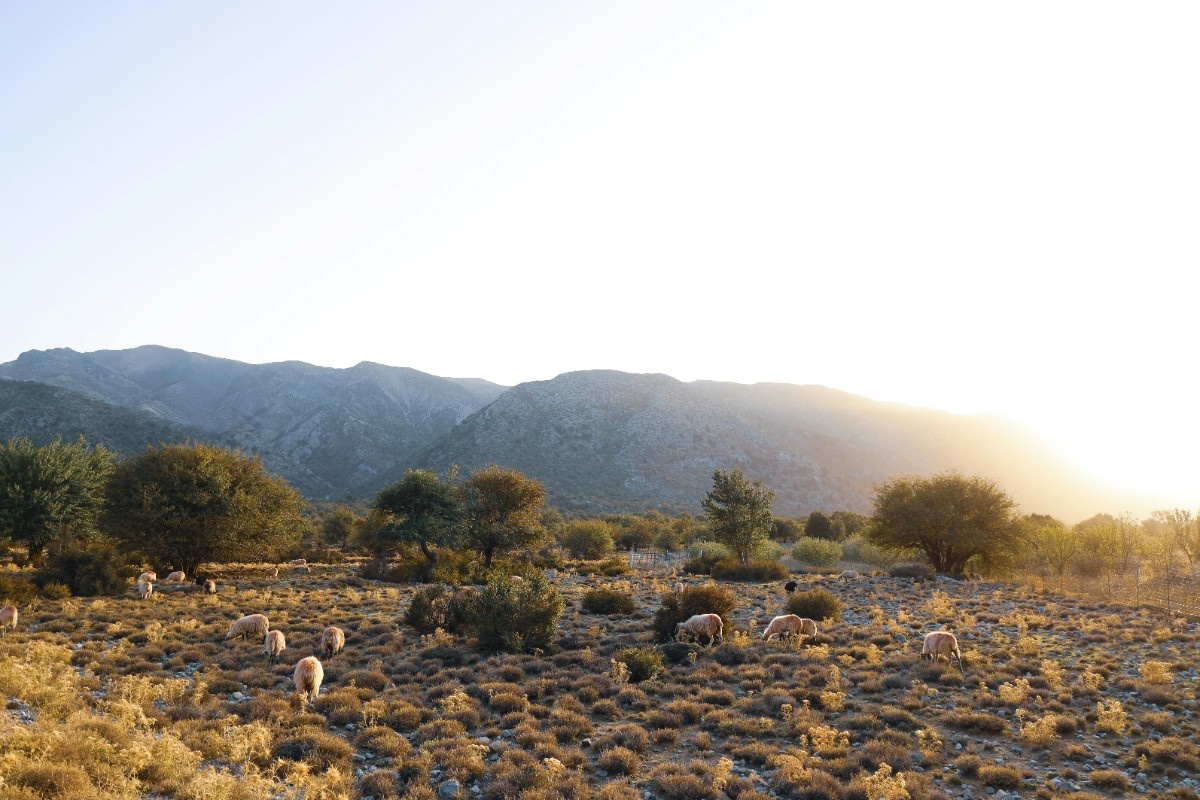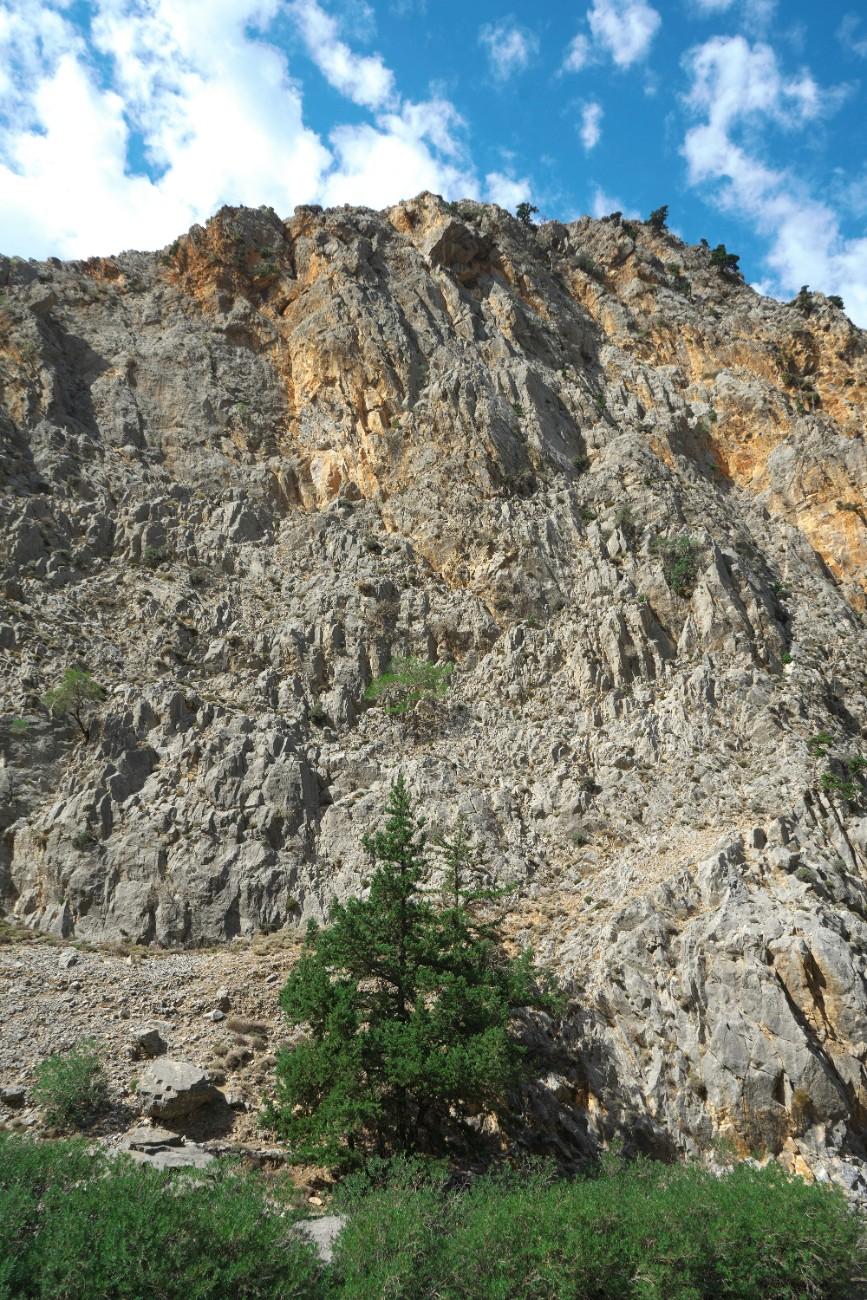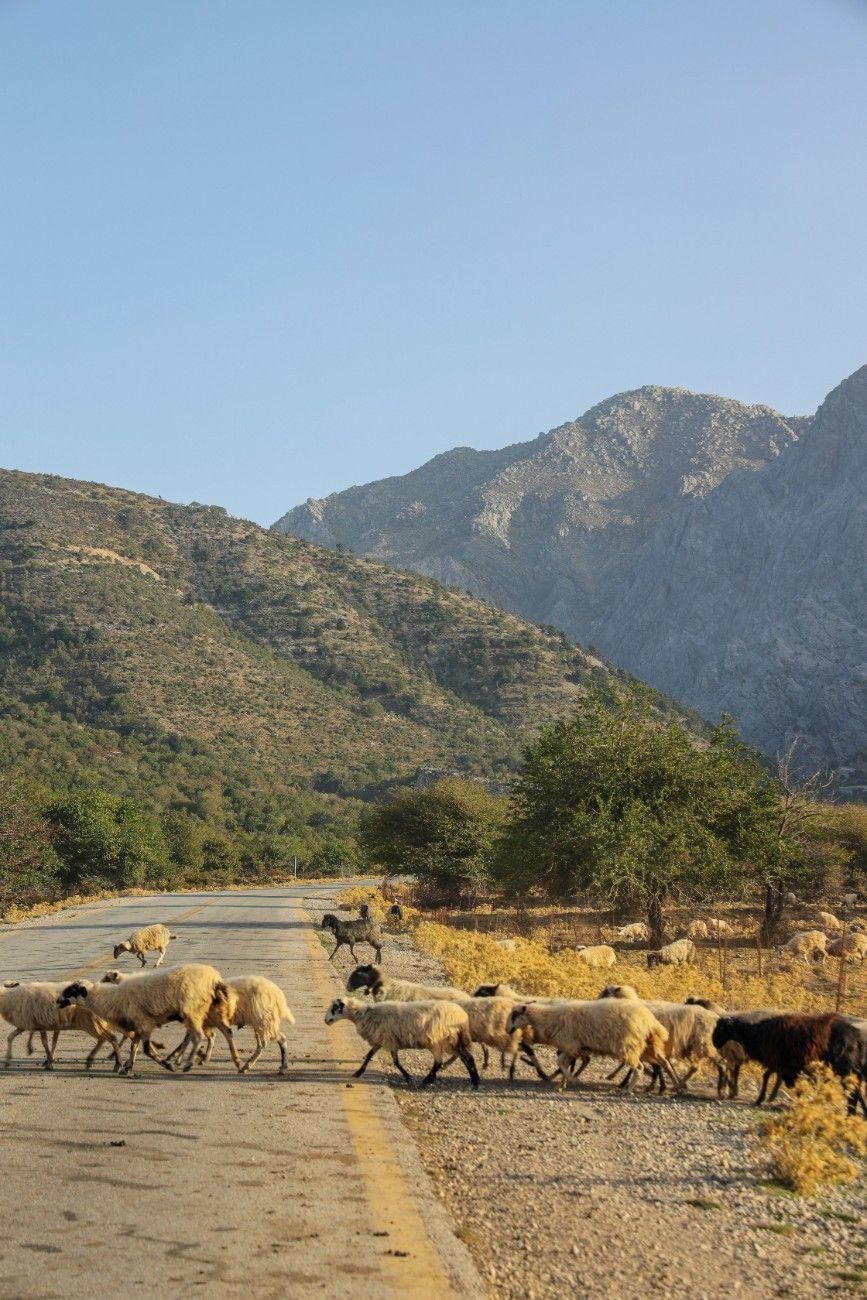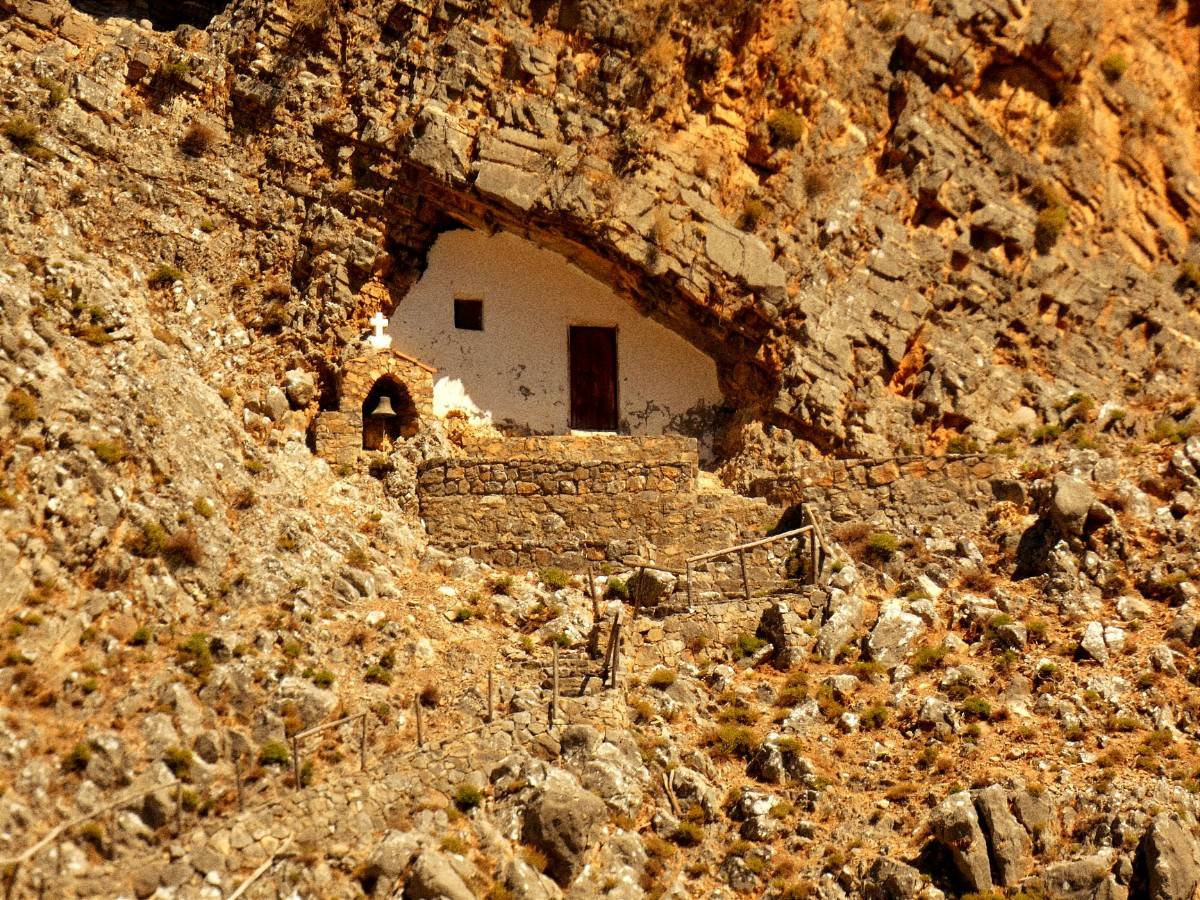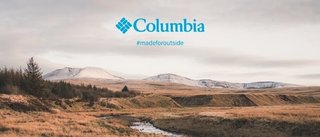The Samaria Gorge stands as Europe's longest limestone gorge and represents one of Greece's most magnificent natural treasures. Located in the heart of Crete's White Mountains National Park, this remarkable geological formation stretches 16 kilometres through some of the Mediterranean's most dramatic landscapes. This comprehensive guide explores everything you need to know about hiking the Samaria Gorge, from its rich history to practical tips for conquering this legendary trail.
The Natural Heritage of Samaria Gorge National Park
Geological Formation and Structure
The Samaria Gorge Crete represents one of Europe's most remarkable geological formations, carved through millennia of natural processes. The limestone foundation of the gorge dates back to the Mesozoic era, when the entire region lay beneath ancient seas. The dramatic uplift of the White Mountains, coupled with extensive erosion, created this magnificent canyon system. The gorge's formation process continues today, though at an imperceptible rate, as water constantly shapes the limestone landscape.
The unique geological composition of Samaria Gorge National Park creates distinct zones throughout its length. The upper section features dramatic cliff faces of dolomitic limestone, while the lower portions reveal younger rock formations interspersed with marble bands. This varied geology produces the spectacular colour variations visible in the gorge walls, ranging from stark whites to deep greys and warm ochres. The famous Iron Gates section, where the gorge narrows to merely three metres wide, showcases the immense pressure forces that helped shape this natural wonder.
Water plays a crucial role in the gorge's ongoing formation. The Tarraios River, though seasonal, continues to carve its path through the limestone, creating new features and modifying existing ones. Underground water systems within the gorge create numerous springs and seasonal waterfalls, contributing to both the geological processes and the gorge's ecological diversity. These water sources have proven essential for sustaining life within the gorge throughout its history.
Endemic Flora and Fauna
The gorge of Samaria Crete serves as a sanctuary for an extraordinary collection of plant and animal species, many of which exist nowhere else on Earth. The varying altitudes within the gorge, ranging from 1,250 metres at Xyloskalo to sea level at Agia Roumeli, create distinct microclimates that support unique ecological communities. This environmental diversity has led to the evolution of numerous endemic species, making the gorge a living laboratory of biological adaptation.
The most famous resident of the gorge is the kri-kri, Crete's endemic wild goat. These agile creatures, perfectly adapted to the steep cliffs and narrow ledges of the gorge, represent one of the park's greatest conservation successes. The current population of approximately 2,000 individuals demonstrates the effectiveness of the protection measures implemented within the national park. Alongside the kri-kri, the gorge supports numerous other endemic species, including several varieties of birds, reptiles, and insects that have adapted to this unique environment.
Plant life within Samaria Gorge Greece showcases remarkable diversity, with over 450 documented species. Of these, 70 are endemic to Crete, making the gorge a botanical treasure trove. Ancient cypress trees, some exceeding 300 years in age, stand as living monuments throughout the gorge. The spring season brings an explosion of colour as rare orchids and endemic wildflowers carpet the ground, creating a spectacular display that attracts botanists and nature enthusiasts from around the world.
Planning Your Samaria Gorge Hike: Essential Preparation
Timing and Seasonal Considerations
Planning a Samaria Gorge hike requires careful consideration of seasonal factors. The gorge typically opens to visitors from May through October, with each month offering distinct advantages and challenges. Early season visits (May-June) provide comfortable temperatures and spectacular wildflower displays, though occasional spring rains can make portions of the trail slippery. Peak season (July-August) brings reliable weather but also larger crowds and intense heat, particularly during midday hours.
The optimal time to begin the hiking in Crete Samaria Gorge adventure is early morning, ideally catching the first bus from Chania around 6:00 AM. This early start offers several advantages: cooler temperatures for the initial descent, better lighting for photography, and the opportunity to experience the gorge's tranquillity before it fills with other hikers. Additionally, an early start ensures sufficient time to complete the hike and catch the afternoon ferry from Agia Roumeli.
Weather patterns within the gorge can vary significantly from those in surrounding areas. The high walls provide shade during much of the day, but exposed sections can become extremely hot during summer months. Temperature variations between the start point at Xyloskalo and the finish at Agia Roumeli can exceed 10 degrees Celsius, necessitating careful clothing selection and adequate water supplies.
Equipment and Physical Preparation
Successfully completing the Samaria Gorge Crete hike demands proper equipment and physical conditioning. Footwear represents the most critical equipment choice, with sturdy hiking boots offering ankle support being essential. The varied terrain throughout the gorge includes steep descents, rocky paths, river crossings, and wooden walkways, each presenting unique challenges to hikers. Technical hiking socks help prevent blisters, while trekking poles can reduce strain on knees during the lengthy descent.
Physical preparation should begin several weeks before attempting the gorge Samaria Crete trek. The 16-kilometre journey involves a vertical descent of over 1,000 metres, placing significant stress on leg muscles and joints. A training regimen should include cardiovascular exercises, particularly downhill walking or hiking, to build stamina and strengthen relevant muscle groups. Core strengthening exercises also prove beneficial, as they improve balance and stability on uneven terrain.
Essential items for the hike include at least two litres of water per person, high-energy snacks, sun protection, and basic first aid supplies. A daypack should be comfortable and well-fitted, as it will be carried throughout the journey. While water sources exist within the gorge, they may not be reliable during late summer months. Layered clothing allows adaptability to changing temperatures, with a lightweight waterproof jacket providing protection against unexpected weather changes.
The Journey Through Samaria Gorge: A Step-by-Step Guide
The Upper Section: Xyloskalo to Samaria Village
The journey through the Samaria Gorge Crete Greece begins at Xyloskalo, where an impressive wooden staircase descends into the heart of the gorge. This initial section presents one of the most challenging portions of the hike, featuring a dramatic descent of 600 wooden steps that wind their way down the gorge's upper reaches. The morning light creates spectacular photo opportunities here, as the sun gradually illuminates the limestone walls and casts long shadows across the valley below.
After navigating the wooden staircase, the path enters a forest of ancient cypress and pine trees. This section of the Samaria Gorge hike offers welcome shade and numerous resting points where hikers can catch their breath and adjust to the altitude change. Small springs and streams begin to appear along the trail, their crystal-clear waters providing refreshment. The path alternates between packed earth and loose stones, requiring careful attention to footing.
The first major landmark appears approximately two hours into the hike: the abandoned village of Samaria. This historic settlement, once home to a thriving mountain community, now serves as an important rest stop and cultural point of interest. The village's stone buildings, including the remarkable church of Saint Maria, offer fascinating glimpses into traditional Cretan mountain life. Rangers maintain a permanent post here, providing assistance and historical information to interested hikers.
The Heart of the Gorge: Iron Gates and Beyond
The middle section of the gorge Samaria Crete presents some of the most spectacular scenery in all of Greece. As hikers progress deeper into the gorge, the limestone walls grow increasingly dramatic, reaching heights of over 300 metres. The path crosses the seasonal river multiple times via wooden bridges, each crossing offering new perspectives on the gorge's magnificent geology. The sound of water echoes off the walls during spring months, creating an atmospheric backdrop to the journey.
The most iconic portion of the Samaria Gorge National Park arrives at the Iron Gates, or Portes. Here, the gorge narrows to its famous three-metre width, while the walls soar vertically for 300 metres on either side. The acoustics in this section prove remarkable, with even whispers carrying clearly off the smooth rock faces. Most hikers pause here to appreciate the sheer scale of the formation and capture photographs, though the challenging lighting conditions require patience to achieve the perfect shot.
Beyond the Iron Gates, the gorge gradually begins to widen as it approaches the coast. The vegetation changes noticeably, transitioning from mountain species to more typical Mediterranean flora. The final kilometres of the hiking in Crete Samaria Gorge experience provide gentler terrain, though fatigue often sets in during this stage. The sound of the sea grows stronger, and the air becomes warmer and more humid as hikers approach Agia Roumeli, where the gorge meets the Libyan Sea.
Flora, Fauna, and Conservation in the Gorge
Biodiversity and Endemic Species
The Samaria Gorge Crete supports an extraordinary range of biodiversity, with its varied elevations and microclimates creating perfect conditions for numerous species. The park's isolation has led to the evolution of unique plant and animal varieties found nowhere else on Earth. Scientists have documented over 450 plant species within the gorge, including 70 endemic to Crete, making this area one of the Mediterranean's most important botanical regions.
The legendary kri-kri, or Cretan wild goat, represents the most famous endemic species in the gorge of Samaria Crete. These agile creatures have adapted perfectly to the steep terrain, developing remarkable climbing abilities and distinctive curved horns. Conservation efforts have helped stabilise the kri-kri population, though they remain vulnerable to various threats. Visitors lucky enough to spot these elusive animals often describe it as a highlight of their gorge experience.
The park's bird population includes several rare and protected species, including the bearded vulture (lammergeier), Bonelli's eagle, and the golden eagle. These magnificent birds nest in the higher reaches of the gorge walls, taking advantage of the numerous caves and ledges. The gorge's unique acoustic properties often allow hikers to hear these birds' calls echoing off the walls long before catching sight of them soaring overhead.
Conservation Challenges and Management
Managing the delicate balance between tourism and conservation in the Samaria Gorge Greece presents ongoing challenges for park authorities. With thousands of visitors traversing the gorge during peak season, controlling human impact remains a priority. The park implements strict regulations regarding waste disposal, noise levels, and trail use. Rangers stationed throughout the gorge monitor visitor behaviour and enforce these rules to protect the fragile ecosystem.
Climate change poses an increasing threat to the gorge's ecological balance. Rising temperatures and changing precipitation patterns affect both flora and fauna, particularly the endemic species that have evolved to thrive in specific conditions. Park scientists conduct regular monitoring programmes to track these changes and develop adaptation strategies. This research provides valuable data for understanding climate change impacts on Mediterranean mountain ecosystems.
Water management within the Samaria Gorge National Park represents another crucial conservation challenge. The gorge's seasonal river system supports numerous species and plays a vital role in the local ecosystem. Park authorities carefully monitor water levels and quality, particularly during the dry summer months when tourist numbers peak. Springs and water sources along the trail receive regular testing to ensure they remain safe for both wildlife and human consumption while maintaining the delicate hydrological balance of this unique environment.
Practical Information and Cultural Significance
Transport and Logistics
Accessing the Samaria Gorge Crete requires careful planning and understanding of local transport systems. Most visitors begin their journey from Chania, where daily buses depart for Xyloskalo starting at 6:00 AM during the hiking season. The journey takes approximately 90 minutes, winding through mountain villages and offering spectacular views of the White Mountains. Advance booking proves essential during peak season, as these buses often reach capacity, particularly in July and August.
The completion of a Samaria Gorge hike involves coordinating the return journey from Agia Roumeli. This small coastal village, accessible only by foot or boat, serves as the gorge's southern terminus. Regular ferry services connect Agia Roumeli to Sougia, Paleochora, or Hora Sfakion, where buses await to return hikers to Chania. The last ferry typically departs around 5:30 PM, making time management crucial during the hike. Most visitors choose to purchase a comprehensive transport package that includes both morning bus and afternoon ferry services.
Local travel agencies in major Cretan towns offer organised tours of the gorge Samaria Crete, which can simplify logistics for first-time visitors. These packages typically include transport, entrance fees, guides, and insurance. However, independent hikers often prefer arranging their own transport, as this offers more flexibility with timing and pace. The national park's website provides updated information about transport schedules and services throughout the hiking season.
Historical Significance and Cultural Heritage
The Samaria Gorge Greece holds profound historical significance for Crete, having served as a refuge during numerous conflicts throughout the island's turbulent history. During the Ottoman occupation, the gorge provided shelter for resistance fighters and local communities seeking safety from invading forces. World War II saw similar usage, with the gorge becoming a crucial escape route for Allied soldiers and local resistance members fleeing to Egypt via submarines that would collect them from the southern coast.
The abandoned village of Samaria, located within the Samaria Gorge National Park, represents a remarkable example of traditional Cretan mountain architecture and lifestyle. This settlement, inhabited until 1962 when the area became a national park, consisted of approximately 20 families who lived in harmony with the challenging mountain environment. The village's buildings, constructed from local stone and timber, demonstrate sustainable building practices that evolved over centuries of mountain living.
Religious significance adds another layer to the cultural importance of the gorge of Samaria Crete. The 14th-century church of Saint Maria, from which the gorge takes its name, remains a testament to the deep spiritual connections of local communities. The church hosts an annual festival on November 21st, drawing visitors from surrounding regions to celebrate its patron saint, though this occurs outside the regular hiking season.
Safety and Medical Considerations
Understanding safety protocols proves essential when attempting the hiking in Crete Samaria Gorge experience. The national park maintains a well-organised system of rangers and emergency procedures, with stations positioned at strategic points throughout the gorge. These rangers monitor hiker progress and provide assistance when needed, communicating via radio to ensure rapid response to any emergencies. Basic medical facilities exist at both Xyloskalo and Agia Roumeli, though serious medical issues require evacuation to larger facilities in Chania.
Weather conditions within the Samaria Gorge Crete Greece can change rapidly, particularly during shoulder seasons. While summer months typically offer stable weather, spring and autumn hikers should prepare for sudden temperature changes and occasional rainfall. The gorge's unique topography can create localised weather patterns, with strong winds sometimes funnelling through the narrower sections. Park authorities may close the gorge during adverse weather conditions, particularly when flash flood risks exist.
Medical preparation should include consideration of personal health conditions and fitness levels. The challenging terrain and length of the hike require good physical condition, and visitors with existing medical concerns should consult healthcare providers before attempting the trek. Carrying personal medical supplies, including any prescribed medications, proves essential, as pharmacy services are not available within the gorge. Heat exhaustion presents a particular risk during summer months, making proper hydration and sun protection crucial components of hike preparation.
Related Articles

Let us know you agree to cookies
We use marketing, analytical and functional cookies as well as similar technologies to give you the best experience. Third parties, including social media platforms, often place tracking cookies on our site to show you personalised adverts outside of our website.
We store your cookie preferences for two years and you can edit your preferences via ‘manage cookies’ or through the cookie policy at the bottom of every page. For more information, please see our cookie policy.
